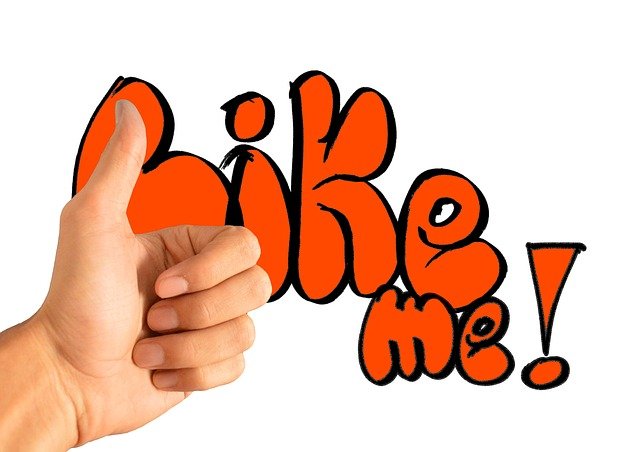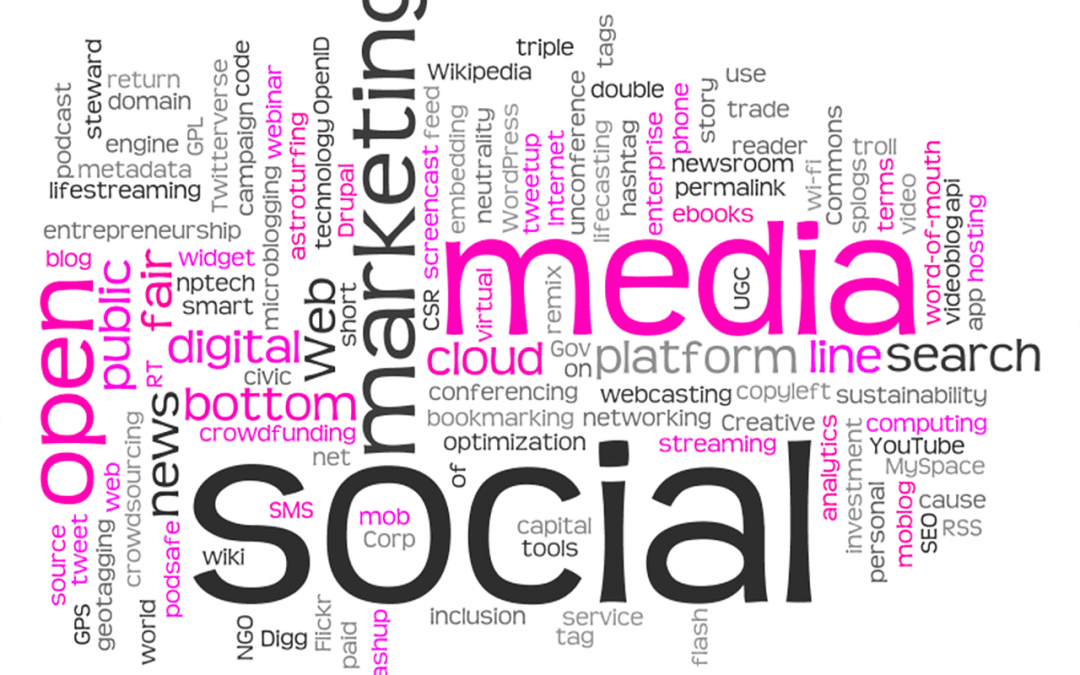
by morgan | Sep 30, 2021 | Wedding
The post How To Get Your Creative Wedding Hashtag appeared first on .

There’s truth to the saying that you blink once on your wedding day and then it’s over. After months of gathering inspiration, planning, and even rehearsing the big day, it ends in a flash. What remains from your wedding are the memories and images captured by both your expert wedding photographer and your guests.
Thankfully, your wedding photographer will edit your images and get them back to you to enjoy forever. Tracking down images from your guests, however, isn’t always this simple. Unless you aggregate them with a creative wedding hashtag.

The Benefits Of Using A Creative Wedding Hashtag
While using a creative wedding hashtag, you can begin your wedding documentation early on. This gives you the opportunity to see your wedding journey in one place—from the proposal to the final goodbyes on your wedding night.
Utilizing your unique wedding hashtag when you post your proposal announcement, engagement shoot, and fun wedding planning adventures means you can quickly and easily see everything related to the best day of your life.

How To Use Your Wedding Hashtag
Include your hashtag on your invitations so that your guests can document any pre-wedding parties or events they attend like your rehearsal dinner.
Then, be sure to include your hashtag everywhere on your wedding day. Trust us. Be sure it’s listed clearly on items your guests are sure to see. Places like:
- Programs
- Menus
- Dessert table labels
- Seating charts
- Photo booths and their printed images
- Other signage throughout the wedding
As your guests are sharing on social media, easy access to your creative wedding hashtag will prompt them to use it in their posts.

Junebug Tip
You should also include your hashtag as an insert with your wedding favors. Not every guest will post online right away so the insert will help them remember your wedding hashtag for later.
How To Use Creative Wedding Hashtag Inspiration
There are many schools of thought when it comes to creating a creative wedding hashtag. Most couples start their search online looking through other wedding hashtags for inspiration. However, you should avoid leaning too heavily into other hashtags for inspiration. You’re more likely to end up using the same hashtag as another couple if you do.

Get Started With Wedding Hashtag Professionals
Just like every other aspect of wedding planning, working with professionals is the right way to go. Our friends at Wedding Hashers are professional wedding hashtag writers—seriously. Their team of writers have written wedding hashtags for thousands of happy couples.
Their secret is getting to know their couples—a personalized approach that you just can’t get from an algorithm.

How Wedding Hashers Works
Wedding Hashers has three different packages that include three, five, or twelve hashtag options. These can also be used throughout your wedding planning journey and can include engagement parties, pre-wedding trips, or even wedding outfit shopping.
Once you’ve chosen a hashtag package, you’ll submit a quick questionnaire to give their writers more information about you and your love story. These include questions like your first and last names, nicknames, and what your proposal was like.
After you fill out their questionnaire, they’ll get your wedding hashtag options back to you within one business day. That’s all it takes and then you can rest easy. Working with hashtag professionals will ensure you spend your time elsewhere, planning a day as unique as the hashtag they’ll create for you.

Using A Hashtag Generator
With so many things on your wedding planning plate, coming up with a creative wedding hashtag can be a fun and lighthearted activity, or it can instantly feel overwhelming. Wedding hashtag generators are another option you can use for this very reason.
If you are looking for a quick and fun way to get results, Wedding Hashers also offers a free hashtag generator. While this option does get you a wedding hashtag faster, satisfaction isn’t guaranteed. Generated hashtags also lack the level of personalization that make wedding hashtags special.

The Junebug Recommendation
While the free wedding hashtag generator might sound ideal in the short term, ending up with the same hashtag as another couple can cause problems. For example, if another couple ends up using the same hashtag as you, you won’t get the same streamlined experience of reliving your wedding on social media. If your wedding budget has room for the personalization that Wedding Hashers offers, we recommend opting for the personalization of a creative wedding hashtag.
Coming up with the perfect wedding hashtag isn’t easy. Working with hashtag professionals is an easy choice. Your wedding hashtag should be unique to you to help document your wedding—and only your wedding. Get started today and let Wedding Hashers help you document your love story.

by International Associations | Jun 16, 2021 | Social Media
Negative social media comments and reviews are sometimes amusing, but they can pose major problems for businesses. Many studies have explored the impact of online reviews on consumer behavior, and the general consensus is that:
Platforms like Facebook, Instagram, Twitter and Google are unavoidable parts of running a business today. They increasingly act as the primary connection between your company and its customers, and they also largely shape your online reputation.
While these interactions and your social media marketing efforts can be productive for your business, they’re also highly visible and can hurt you if handled haphazardly.
For instance, when someone posts negative feedback on Google, all of your current and potential customers can see it, as well as your subsequent reaction. Is that reaction calm and empathetic, rash and emotional, or something else entirely
If you’re running your own business and haven’t found a solution for gracefully dealing with your customers online, it’s time to change that.
In this article, we explore several strategies for dealing with negative social media comments, walk you step-by-step through responding to a less-than-ideal customer review, explain what not to do when managing the comment sections of your social media profiles, and finally elaborate on the importance of responding to all comments — the good, the bad, and the ugly.
Let’s get to it.
Strategies for handling negative social media comments
Not sure how to respond to negative comments on social media like a pro? These suggestions can help.
Ready? Let’s go.
Related: A beginner’s guide to social media for small business
Respond to the comment quickly

The last thing you want a disgruntled customer to feel is that you’re ignoring their complaint or concern. Not to mention, casual bystanders (i.e. potential customers) will take your silence into consideration before purchasing your products or services.
Even if you need some time to look into their problem, there’s nothing wrong with simply posting an official statement that says you’re investigating the situation and will be in touch as soon as possible. Just make sure you remember to leave a response once you’ve figured it out (or it won’t be a good look either).
Back to top
Be sincere and transparent
Believe it or not, most customers understand that you and the individuals working with you are human. Mistakes happen. How you deal with them, however, is where you can really hurt (or boost) your reputation.
If there’s an issue with your products or services, let your customers know that you’re aware of the problem, and are working on a solution.
Leave the script behind and communicate your genuine concern and commitment toward addressing the issue.
Plus, negative comments can humanize your social media profiles. A constant stream of 5-star reviews might seem phony to some users, so engage with them sincerely to de-escalate situations and generate goodwill.
Related: 15 social media tips and best practices for 2020
Back to top
Give discounts when necessary
Sometimes people just need to know that you understand their frustration. When you back up a thoughtful response with a discount, you don’t just tell them you understand — you show them.
Think of a small discount as an extra token of your appreciation for their business, and for taking the time to provide feedback.
Just make sure the discount makes sense and is proportionate to the issue they’re facing, or that discount will look insincere.
Discounts can provide a variety of benefits for businesses as well. Although handing out a discount may cost you a little upfront, it often pays off in the form of a loyal customer, or even future business from that customer’s social circle (word of mouth marketing is a powerful thing).
Back to top
Interact directly with your customers

It’s not always ideal to handle negative social media comments on public forums. Know when to leave a polite and sincere response, as well as when to step back and directly message customers.
Not only do public forums reduce your control of the situation, but watching a Twitter battle unfold might also annoy your followers, even if you’re being kind and accommodating. And if you’re dealing with negative feedback on Yelp? Also a place where things can escalate quickly.
The bottom line is that almost every popular social media platform has a direct message feature. Use that feature to your advantage.
After you’ve handled the formalities of making a public response, move the conversation to private messages where you can explore the customer’s unhappiness and try to make it right. Just remember to conduct yourself as though everyone is watching, because people will take screenshots if they feel slighted.
Related: 3 steps to managing reviews online
Back to top
Make yourself available and visible
Your company website and social media profiles should make it easy for your customers to contact you, and for you to reach out to them.
A social media complaint response doesn’t always have to be incredibly public, either. If a customer complains on your business page, leave a polite reply saying that you’re sorry for their experience and that you’ll be in touch via messenger to rectify the situation.
You can also provide an unhappy customer your customer service phone number or email address to give them direct access to a human being — especially if the issue is ongoing or if you’re trying to troubleshoot their problem.
There’s nothing more disheartening for a customer than having to cut through red tape when they have a problem.
Back to top
Keep things in perspective
The best business owners know they have to take the bad with the good, and that bumps — like negative feedback — are part of the game. Strive to resolve negative social media comments responsibly, and stay focused on the good that can come from them. Your customers will appreciate you and your business much more if you do.
Finally, when thinking about your optimal response to negative comments, the most important thing to keep in mind is that your customers are reaching out for help (even if they do so in an angry or exasperated way).
Take care of their needs and, most of the time, they’ll repay you with loyalty and positive comments in the future.
Related: 4 ways to wow with social media customer service
Back to top
Considerations for leaving a response to negative comments
So when that negative comment inevitably appears, what steps should you take to make the situation right? We’ve got five steps below to guide you through.
1. Step back and take a deep breath
Some people are naturally laid back in every situation. But for the rest of us, it’s easy to get defensive when someone complains or attacks something we hold close to our hearts, like our business.
Do whatever you need to achieve a stable state of mind before responding to a negative social media comment.
You want your brand voice to be professional and level-headed, even if irreverence is on-brand for your particular business.
When you’ve achieved that mental state (or something close to it), proceed to the next step.
Back to top
2. Write out your response on paper
Don’t jump online and push out a hurried response to the negative social media comment. Take your time, and write your thoughts out on paper.
Taking notes and writing a draft like this lets you gather your ideas, consider how to best articulate your response, and determine if you think this customer deserves a discount, refund, etc. It also gives you time to think about what to post publicly, and what to keep private.
Back to top
3. Be ready to give something up
As you’re writing out a response to the complaint, also think about what you could potentially give up — discounts, free shipping, free products — in order to turn things around with the customer.
Ultimately, placating an unhappy and vocal customer will save your business money.
However, it’s important to phrase your offer in a way that comes off as sincere, or it may not end up helping at all and may actually make them angrier.
That’s why it’s important to get a second opinion on your response.
Back to top
4. Loop in a colleague or trusted individual for writing feedback

It might seem drastic, but a single social media complaint response can end up causing many issues for your business. After you’ve written what you think is the ideal reply for this particular scenario, get a second opinion.
Having someone else assess the tone of your words — whether it’s a colleague, trusted friend, or even spouse — can help ensure your writing comes off as sincere.
Show them the customer’s complaint as well as your potential response, and see what they think. It’s possible they’ll have suggestions on how to better ameliorate the situation, and they can give you an opinion on whether a discount/refund seems like the next logical step.
Back to top
5. Comment and track the situation
You’ve put together an on-brand, calm-and-collected response and had its tone approved by someone else — you’re now ready to respond to the negative comment.
After you’ve clicked “reply” or “send,” you’ll want to make sure the situation comes to a satisfactory conclusion for both you and the customer/user, so don’t sweep everything under the rug just yet.
Make sure that any promises you make in your comment come to fruition, follow up in a private message if the customer is unresponsive to your reply, and be ready to wrap everything up with a nice bow once the customer reaches out again.
If you’re able to turn these negative social media comments into a positive (or even just mitigate their impact), your business’s online presence will be a stable, healthy one.
Back to top
What NOT to do when responding to negative social media comments
There are several things you shouldn’t do when responding to negative social media comments.
1. Don’t delete comments (usually)
For instance, don’t delete negative comments. There are few situations where deleting a user’s complaint about your product or service is a good idea. If they are slinging profanity or posting off-topic things, it’s fine to hit the delete button, but don’t censor legitimate critiques.
Deleting a negative comment can create bad blood very quickly, particularly because people who take the time to post something on your social media are active users.
They are much more likely to follow up if they feel they have been unfairly silenced, and once other customers hear about it, they’ll all grab pitchforks.
Related: How to flag a Yelp review
Back to top
2. Don’t neglect your social media presence
You should also not leave your social media in the hands of untrained employees.
Consistency is key with any business process, and the same applies for your response to negative social media comments. You don’t want to deal with a rogue employee or intern tweeting rude things on your company profiles.
To avoid such issues, have a clear, written outline of your company strategy for responding to negative comments on social media, and put serious effort into training your staff.
Go over your outline with all existing employees, and make that outline part of the onboarding process.
There is no way to plan for every scenario, so your staff will always be expected to use their own creativity and customer service skills. Each employee should be prepared to do so at any time, with any customer.
Take your social accounts seriously, and you’ll be able to achieve a more consistent brand voice across all social media platforms.
Related: How to grow your business’s social media following
Back to top
3. Don’t argue
While you might not believe in the sentiment “the customer is always right,” you should abide by it when addressing negative social media comments. Even if you’re certain they’re wrong, don’t argue, and don’t pick a fight with them, because it will backfire.
And if you know they made an obvious user error, send them a private message politely explaining the situation rather than publicly torching them. They most likely will appreciate the tact and should move on from their gripe as well.
Back to top
Why responding to all comments is good for your business
Responding to all comments is the best strategy for savvy business owners because getting engagement is a challenge. There are many competing voices out there, and as long as the customer in question is sincere and not a spammer or troll, they are worth your time.
Unhappy customers create a dialogue about the quality of your products and services and may be a little help away from being a long-term customer.
Happy customers boost your reputation, connect your business to their social circles, and end up becoming the ones you rely on to keep your business running. Taking care of both demographics is crucial to your online success.
And with the right management tools and plan in place, negative scenarios don’t have to be detrimental to your business either.
It’s definitely possible to walk away from a negative situation with increased loyalty from a previously upset customer, as well as from the users — new and old — who witnessed the situation play out on your social media profiles.
Back to top
Respond well and enjoy the benefits

The level of visibility afforded to social media presents business owners with a unique opportunity when they encounter a disgruntled customer. Your response to negative social media comments, if handled with the proper care and technique, can actually leave your business’s reputation stronger than before.
Whether the feedback you’re getting on your social media accounts is good or bad, engage your customers like never before with GoDaddy Social. Elevate your online presence on the platforms that matter most.
This article includes content originally published on the GoDaddy blog by the following authors: Genevieve Tuenge and Simon Slade.
The post How to positively handle negative social media comments appeared first on GoDaddy Blog.





















